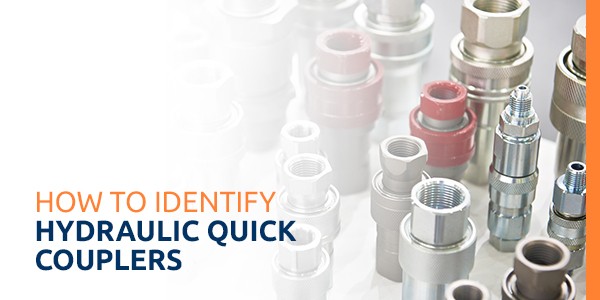How to Identify Hydraulic Quick Couplers

Manufacturers create multiple hydraulic quick coupler types to connect machinery quickly and efficiently. The hydraulic quick coupler is one of the most effective methods for controlling hydraulic power flow. You and members of your organization must learn to identify hydraulic quick couplers to use them properly.
What Is a Hydraulic Quick Coupler?
A hydraulic coupler is a quick, convenient method to attach or detach hoses and fittings in high-pressure hydraulic systems. They provide a fluid-tight seal to maximize the hydraulic system. This coupler type is an ideal tool across industries from agriculture to industrial equipment.
Manufacturers use nonferrous metals like aluminum alloys or brass to design these couplers for durability. Couplers often feature integral crimp sleeves as well as oil-resistant O-rings.

What Does a Hydraulic Coupler Do?
A hydraulic coupler makes a tight connection for hydraulic fluid to flow between two tools. For example, a construction worker at an assembly workstation might need to switch tools in seconds to remain efficient. The workstation provides one coupling half on every tool and the other half on the air line. Then, the worker can simply swap tools on the airlines with ease.
A tractor operator could use hydraulic couplings to rapidly switch between attachments like a grappler and tree shearer on the same job site. Whatever your application, hydraulic couplers provide a safe and convenient way to move between tools.
How to Identify a Hydraulic Coupler
There are two main types of hydraulic couplers — pioneer and flat face couplers.
The pioneer has a male and female end. The male end has a rounded tab that gets pushed back when inserted into the female end. Simply pull the collar back on the female end and insert the male end. The pressure seal allows the hydraulic fluid to move between the connectors.
The flat face coupler is similar to and easier to operate than the pioneer. All you have to do is click the male and female ends together without pulling back the collar on the female end.
There are many different size and shape variants within these two categories. It’s critical to ensure that your organization’s equipment will properly integrate with new machinery that comes with its own hydraulic couplers.
A 3-inch male coupler will not fit into a 2-inch female coupler, and there is no universal standard or adjustment tool to fix this issue. All brands of hydraulic couplers will match each other based on ISO standards, but you cannot match different sizes.
Find Out More About Hydraulic Couplers and Hydraulic Repair Services Today
Hydraulic couplers are a fast, efficient solution for easily controlling the flow of hydraulic fluid. Global Electronic Services understands how any malfunction of this equipment can cause significant downtime for your organization.
We offer competitive pricing and quick turnaround times for hydraulic repair services that will help you get the job done. Reach out to us online, if you want repair assistance from industry experts.
